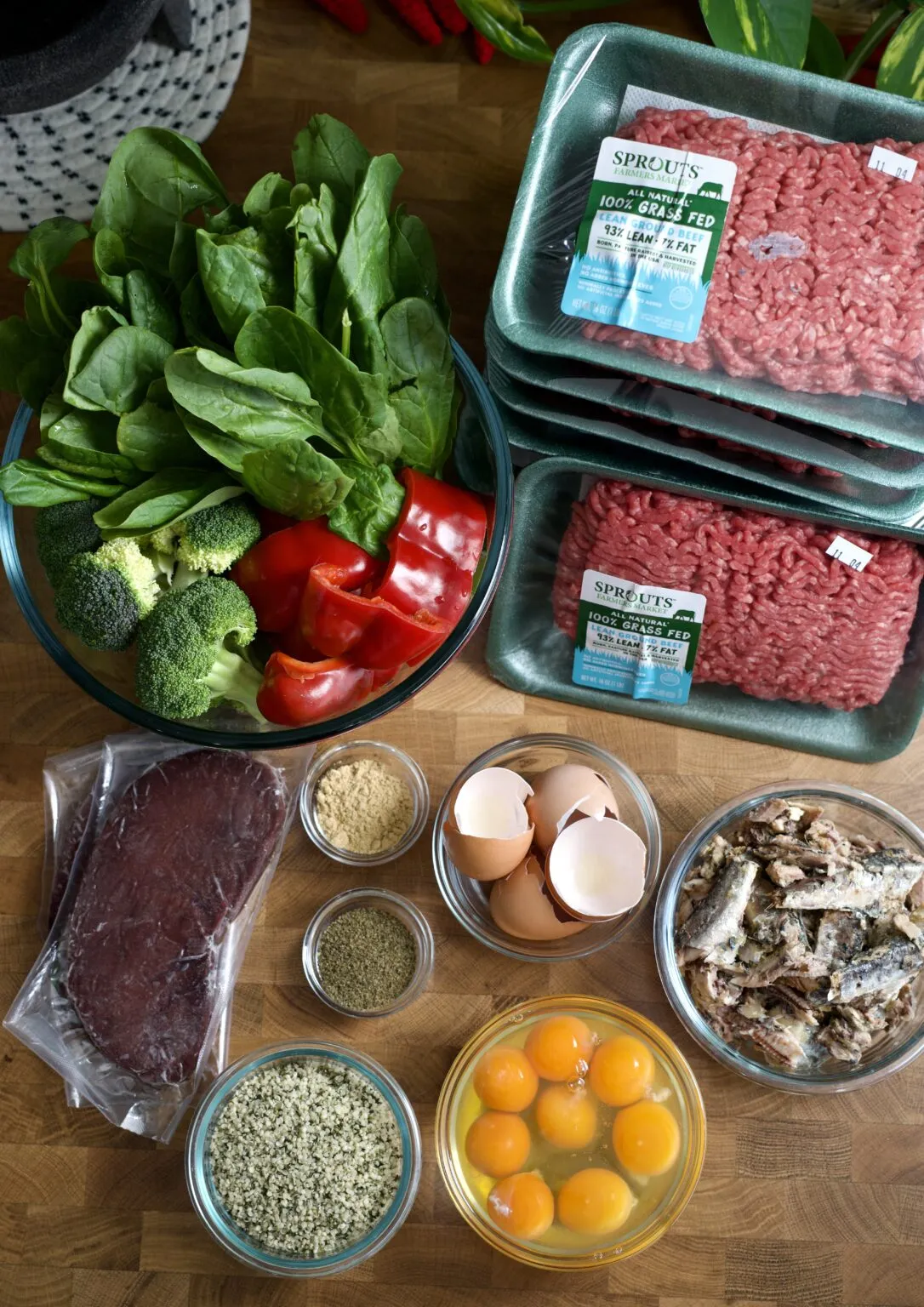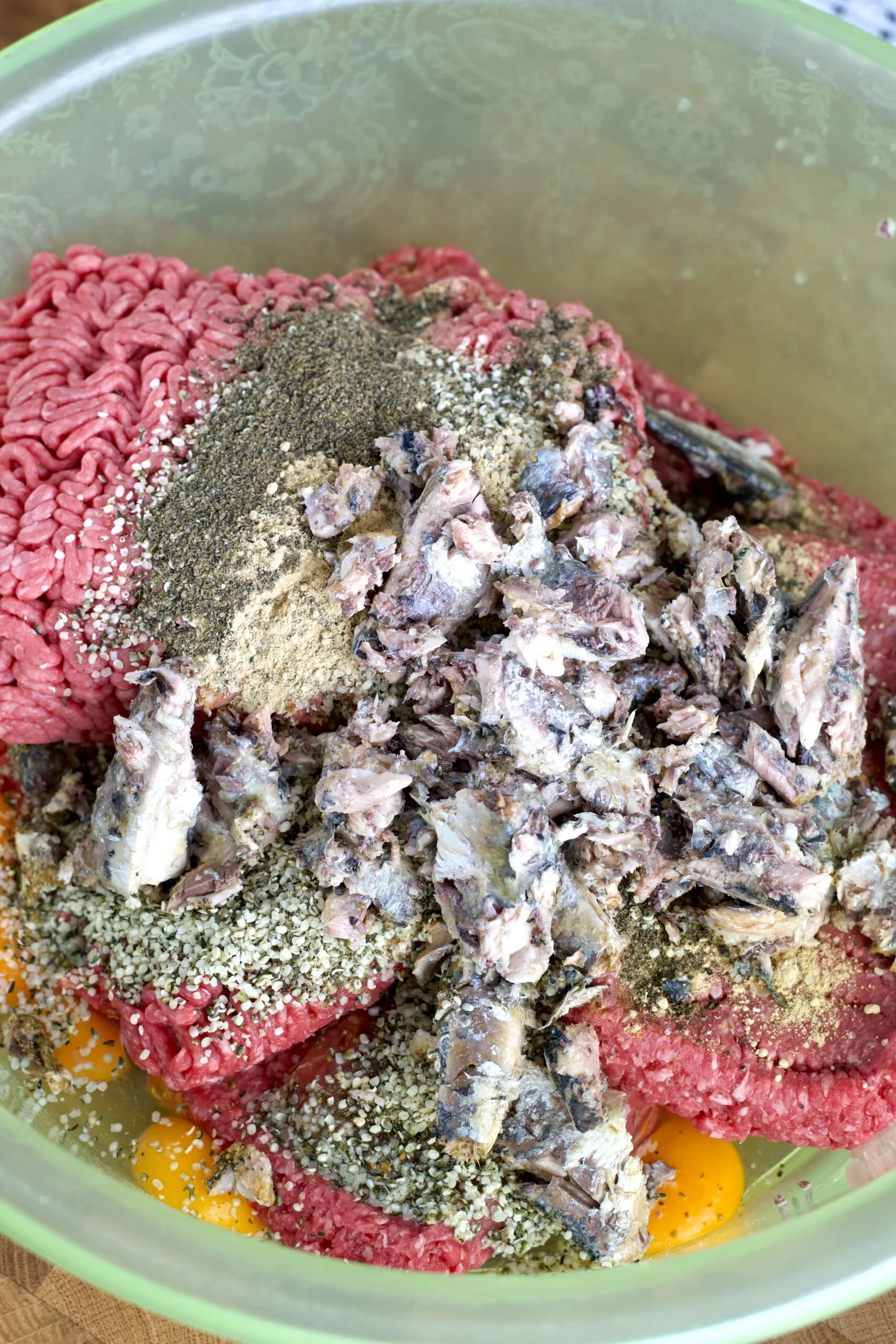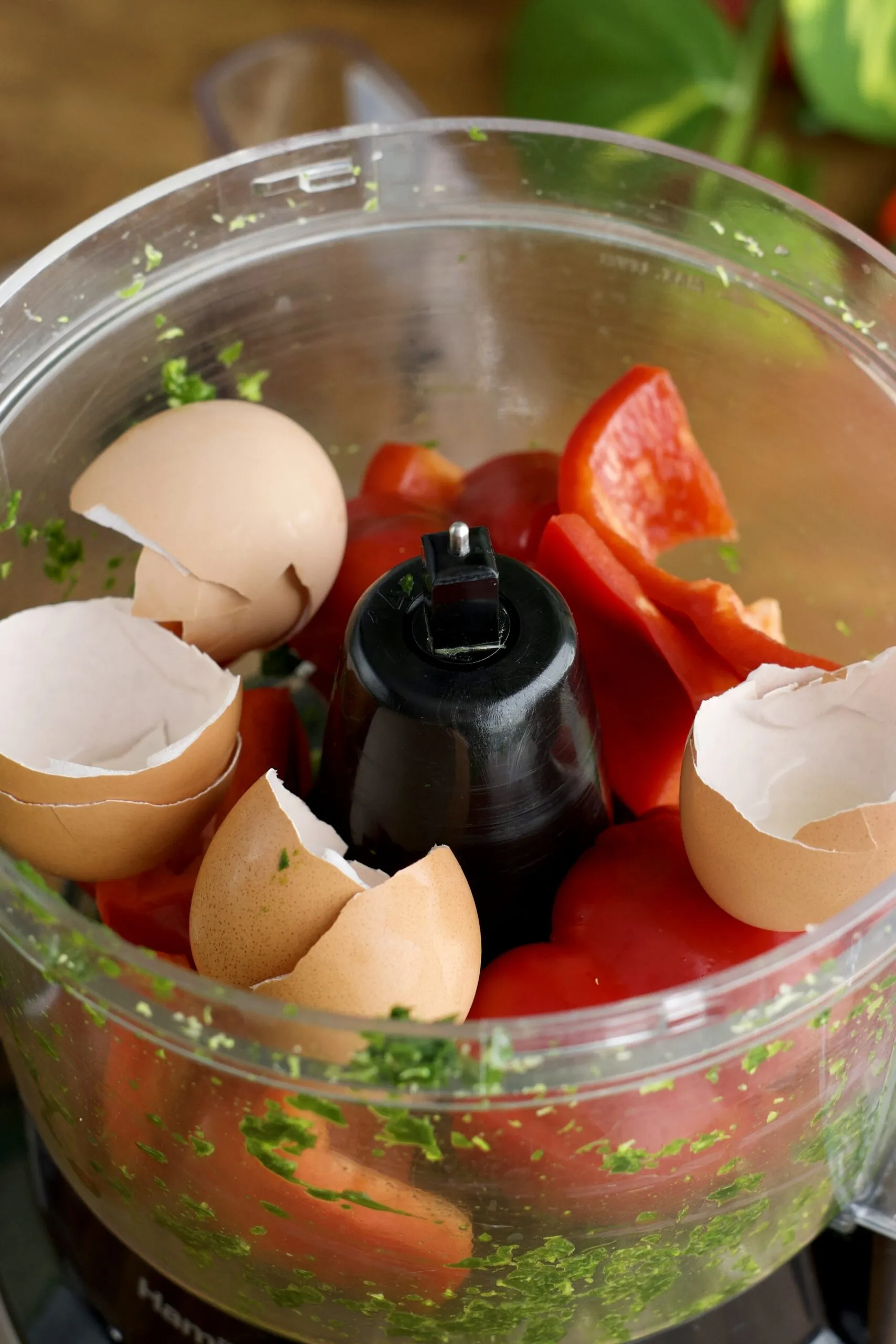As devoted pet parents, we all want our furry companions to live long, vibrant lives. A cornerstone of their well-being is a nutritious diet. While commercial dog foods offer convenience, many owners are exploring how to Make Your Own Dog Food Recipe to gain full control over what goes into their beloved pets’ bowls. This comprehensive guide, based on a veterinarian-recommended formula by Dr. Karen Becker and Rodney Habib, empowers you to prepare balanced, wholesome meals that can significantly enhance your dog’s health and vitality.
Preparing homemade dog food allows you to select high-quality, fresh ingredients, avoiding fillers, artificial preservatives, and unknown additives often found in store-bought options. This proactive approach can lead to remarkable health benefits, including a super shiny coat, healthy teeth, and fresh breath, as experienced by many who have adopted this feeding method. The initial investment in ingredients might seem higher, but the long-term health advantages often translate to fewer vet visits and a happier, healthier dog.
The Benefits of Crafting Your Dog’s Meals
Beyond the satisfaction of knowing exactly what your dog is consuming, there are numerous practical reasons why this approach to canine nutrition is gaining popularity. One of the most significant advantages of this specific make your own dog food recipe is its suitability for bulk preparation. You can dedicate a session once or twice a month to prepare a large batch, freeze it in convenient portions, and thaw it overnight as needed. This method significantly streamlines meal prep, making homemade feeding much more manageable for busy households. For instance, a batch of approximately 11 pounds (uncooked) can last nearly three weeks for two small adult dogs, each weighing around 10 lbs.
Another fantastic aspect of this recipe is its versatility. While it predominantly features lean ground beef, you can easily substitute it with ground turkey or chicken. When opting for poultry, simply add a little extra beef liver to compensate for the slightly lower levels of iron, zinc, and protein compared to beef. This flexibility ensures your dog enjoys variety in their diet, which can be both mentally stimulating and nutritionally beneficial. This personalized approach to feeding also helps owners be more aware of what food items can dogs not eat when preparing ingredients.
Tailoring Portions: How Much to Feed Your Canine
Determining the appropriate food portion for your dog is crucial for maintaining their ideal weight and health. It’s always best to consult with your veterinarian or a certified pet nutritionist to establish the exact amount your dog needs per serving. General guidelines often recommend feeding between 2-3% of your dog’s total body weight daily. For example, if your dog weighs 12 lbs, and you opt to feed 2.5% of their body weight daily, the calculation would be 0.025 multiplied by 12, equaling 0.3 lbs. Converting this to ounces gives you 4.8 oz per day, which can then be divided into two meals of 2.4 oz each, morning and evening. This precise method ensures your dog receives adequate nutrition without overfeeding.
This specific homemade dog food recipe provides approximately 40 calories per ounce. For more in-depth information on the nutritional value of each ingredient, you can refer to the original video by Dr. Karen Becker and Rodney Habib. Understanding these details helps reinforce the balanced nature of this diet and assures pet owners of its comprehensive nutritional profile.
Cooking Preferences: Raw vs. Gently Cooked
This versatile recipe is suitable for both raw and gently cooked diets, depending on your dog’s specific needs and your preferences. While some dog owners prefer a raw food diet, others, like the creator of this recipe, choose to gently cook the food. If you opt to cook the food, it’s vital to do so without any added oil, using a nonstick pan over low heat. The key is to gently cook the meat until it is just done, taking care not to sear it. You can form patties, large chunks, or mince the meat to your dog’s liking.
For those using a stainless steel pan, proper technique is essential to prevent sticking. Heat the pan for at least three minutes. Test readiness by splashing a little water: if it sizzles and evaporates, it needs more heat. If the water forms small beads and dances around, the pan is ready. At this point, lower the heat as much as possible, allow the pan to cool slightly for a couple more minutes, then add the food and cook it gently over low heat. This method preserves the nutritional integrity of the ingredients while ensuring palatability for your canine companion.
 Homemade dog food portions in reusable freezer bags
Homemade dog food portions in reusable freezer bags
Essential Ingredients for a Balanced Diet
Crafting a balanced homemade dog food recipe relies on a thoughtful selection of ingredients, each contributing vital nutrients. Here’s a breakdown of the core components:
- Very Lean Ground Beef or Poultry: This forms the protein foundation. Lean varieties are crucial due to dogs’ high amino acid requirements. If using ground chicken or turkey, remember they are lower in protein, iron, and zinc than beef, necessitating a larger amount of beef liver to compensate.
- Hempseed: An excellent source of essential fatty acids, including balanced omega-3 and omega-6. Hempseed oil can also be used, but be cautious with heat, as high temperatures can render it unpalatable for dogs.
- Sardines: Canned in water (not oil), sardines are packed with Vitamin E and D. Cod liver oil is a suitable alternative.
- Ground Ginger: Rich in manganese, this ingredient supports connective tissue health, benefiting ligaments, tendons, joints, and muscles.
- Kelp Powder: A powerhouse of iodine, kelp is outstanding for promoting healthy teeth and a shiny coat. Many users report improved breath in their dogs after incorporating kelp.
- Eggs & Eggshells: Pasture-raised eggs provide folic acid and Vitamin B12. The crushed eggshells are a natural and edible source of calcium for adult dogs (though not typically recommended for puppies).
- Beef Liver: This organ meat delivers crucial copper, zinc, and iron. It’s often available in convenient frozen, pre-portioned packages.
- Broccoli, Red Bell Pepper, & Spinach: These vegetables offer a wealth of antioxidants, phytonutrients, enzymes, and fiber. Note: Omit spinach for senior dogs with kidney issues due to its oxalate and high sodium content; however, small amounts are fine for healthy dogs. Understanding what foods dogs can and cannot eat is vital when selecting vegetables.
 Assorted ingredients for homemade dog food including beef, vegetables, and eggs
Assorted ingredients for homemade dog food including beef, vegetables, and eggs
Step-by-Step Guide to Preparing the Food
Making this balanced dog food recipe is straightforward once you have your ingredients ready. Follow these steps to prepare a wholesome meal for your pet:
- Initial Mix: In a large bowl, combine the ground beef (or poultry), eggs, kelp powder, ground ginger, hempseed (or hempseed oil), sardines, and pumpkin puree (if you choose to add it for digestive health, though it’s optional). Drain most of the water from the sardines and break them up thoroughly to ensure even distribution. Save half of the eggshells and set them aside. Mix all these ingredients until well combined, then set the mixture aside.
- Process Vegetables and Liver: Next, take your broccoli, red bell pepper, the saved eggshells, and beef liver, and add them to a food processor. Blend until all these ingredients are finely and evenly chopped. Depending on the size of your food processor, you might need to process these in batches. A food processor with a built-in side scraper can be particularly useful for this step.
- Combine All Ingredients: Once the vegetables, eggshells, and beef liver are processed, add this blended mixture to the ground meat mixture. Mix everything thoroughly until all components are uniformly combined. This ensures your dog gets a consistent nutritional profile with every serving.
- Portioning and Storage: Divide the prepared food into individual portions based on your dog’s daily intake requirements. Uncooked food can be stored safely in the freezer for several weeks. However, if stored in the refrigerator, it should be consumed within a few days (no more than 4 days for cooked food). Using reusable freezer bags is an excellent eco-friendly way to store individual portions and reduce plastic waste.
- Serving: The food can be served raw if your dog’s diet allows. If you prefer to cook it, gently cook without oil on a nonstick pan over low heat until just done. Avoid searing the meat at high temperatures, especially if using hempseed oil, as high heat can alter its taste unpleasantly for dogs. After cooking, drain any fat and let the food cool completely before refrigerating for up to four days.
 Processed vegetables and beef liver in a food processor
Processed vegetables and beef liver in a food processor
Meet Remy & Leeloo: Real-Life Success Stories
The impact of a balanced homemade diet is best illustrated by the vibrant health of real dogs. Meet Remy (left) and Leeloo (right), a mother-daughter duo adopted in 2021. Their owner has witnessed firsthand the positive changes this make your own dog food recipe has brought to their lives. The commitment to providing the best possible nutrition stems from a deep love for her pets, especially after the passing of her previous dog, Lucy, who suffered from kidney failure and arthritis in her old age.
This personal experience, coupled with numerous messages from readers sharing how this recipe has “saved or improved their dog’s life,” underscores the profound difference a carefully prepared diet can make. These testimonials highlight the value of providing a wholesome, transparent diet, offering peace of mind to pet owners and tangible health benefits to their furry family members. For owners of puppies, considering a grain free puppy food recipe that follows similar principles of whole, natural ingredients is often recommended to support their rapid growth and development.
 Remy and Leeloo, two dogs, sitting side-by-side
Remy and Leeloo, two dogs, sitting side-by-side
Complementing Meals with Healthy Treats
In addition to a balanced main diet, healthy homemade treats can further enhance your dog’s well-being and provide beneficial supplements. Green-lipped mussels, for instance, are exceptionally rich in nutrients and are particularly effective in alleviating joint pain in dogs. This is especially relevant for breeds prone to back and joint issues, like dachshund mixes. Incorporating these fishy snacks can offer peace of mind, knowing you are actively helping to reduce inflammation and support your dog’s mobility.
Making your own treats allows for the same control over ingredients as main meals, ensuring they are free from unnecessary additives. This holistic approach to canine nutrition, combining a balanced daily diet with targeted healthy treats, creates a comprehensive wellness plan for your beloved pet. Exploring options like homemade low fat dog food recipes pancreatitis can also provide specialized care for dogs with particular health conditions, emphasizing the adaptability of homemade diets.
Conclusion
Making your own dog food recipe is a profound act of love that offers immense benefits for your canine companion’s health and longevity. By taking control of their diet, you ensure they receive only the freshest, most nutritious ingredients, free from harmful additives. This veterinarian-approved recipe provides a solid foundation for a balanced diet, fostering shiny coats, healthy teeth, and boundless energy. Remember to consult your vet for personalized portioning advice and don’t hesitate to experiment with different proteins for variety. Embrace the journey of homemade dog food and witness the incredible difference it makes in your dog’s life!
